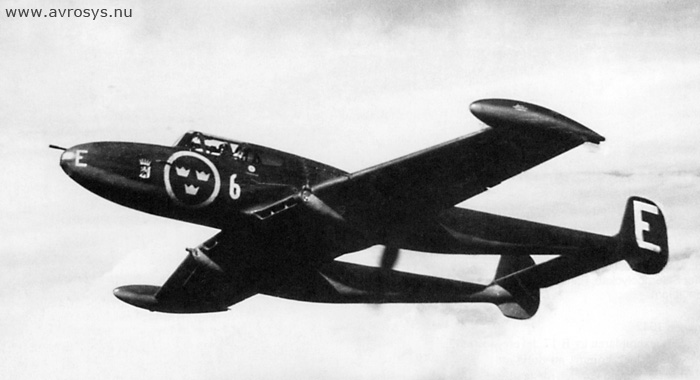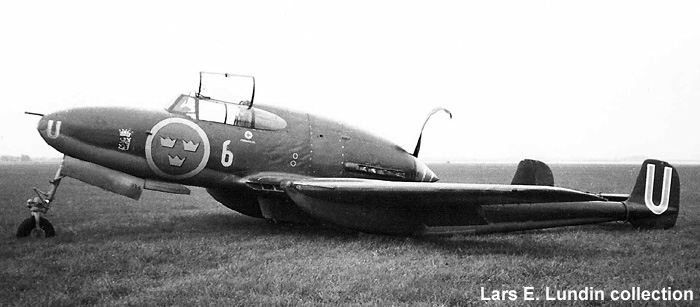|
|
||||||
|
A 21A - SAAB 21A (1947-1954) |
||||||
|
|
Page 1 (3) |
|
||||
|
|
||||||
|
|
||||||
|
The unconventional twin-boom fighter J 21A made its first flying trials in July 1943. Negotiating with the German authorities had secured the license for the manufacturing of the Daimler-Benz DB 605 engine (1475 hp) in Sweden. A more powerful engine would be preferred, but the SAAB designers tried to compensate the lack of engine power by providing the design with increased fire power and better visibility and manoeuvrability. The A 21 soon showed better qualities as a ground attack than a fighter. The SAAB 21A was made in three versions: J 21A-1: The first version, armed with four 13,2 mm and one 20 mm Hispano automatic cannon. 54 aircraft were manufactured and delivered between December 1945 to December 1946. J 21A-2: Two batches of each 62 airframes were delivered between July 1946 to November 1947. They were armed with Swedish-made Bofors cannons and modified instrumentation. J 21A-3/ A 21A-3: The ground attack version which consisted of 119 aircraft delivered between May 1947 and January 1949. This version (also designated A 21A) could carry bombs and rockets. The J 21A suffered all the time from cooling problems when running the engine on the ground. Due to the risks with the propeller behind the pilot, the J 21 was one of the first aircraft in the world to be fitted with an ejection seat. The J 21 was also built in a jet version powered with the de Havilland Goblin engine (J 21R). See also “Jet Fighters”. Air Force Wing F 6 was established in July 1939 at the large and once very important fortress of Karlsborg. The first aircraft were borrowed from other Air Force Wings - first some J 8 Gloster Gladiatiors from F 8 and in 1940 B 4 Hawker Harts from F 4. But at last, during 1941, their regular aircraft, the licence-built dive-bombers B 5 Northrop 8A-1, were delivered. During 1942 - 1944, F 6 also got 58 SAAB B 17 light bombers. The fortress of Karlsborg is really a thing worth seeing. There are a guided adventure tours for tourists in the summer and there as a fine museum open all year round. In 1948, F 6 was
converted from at light bomber wing to an attack wing when the old
aircraft began to be replaced with the SAAB A 21A-3. New built
aircraft were delivered directly from SAAB and other were transferred from
F 7 at Såtenäs and F 9 at Säve. Totally 88 A 21-3 were supplied to F 6. One 500 kg or two 250
kg bombs could be carried in a bomb rack under the fuselage and
further two 50 kg bombs under the wings.
A
21A-3:
Length: 10,45 m. Span: 11,60 m. Height:
4,00 m.
Normal
take-off weight:
4,413
kg. Max. speed: 640 km/h.
|
||||||
|
For the Model Builder Heller Humbrol has produced a plastic model kit in scale 1:72 of the J 21A/A 21A. It includes decals with markings of code blue D of Wing F 6 and code red A of Wing F 9. Catalouge number 08261. |
 |
|||||
|
|
||||||
| SAAB A 21A-3 "Blue Urban" of 2nd Squadron of Wing F 6 (Karlsborg) after an accident at the field of Wing F 7 (Såtenäs). | ||||||
|
|
||||||
|
|
||||||
|
|
||||||
| © Lars Henriksson |
Updated 2010-03-04 |
|||||
|
Custom Search
|
||||||

